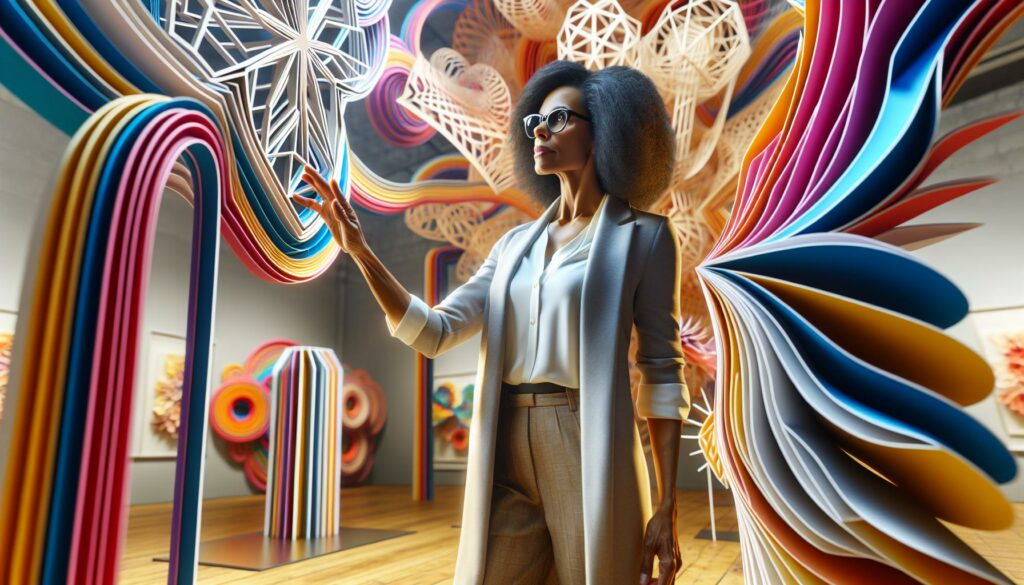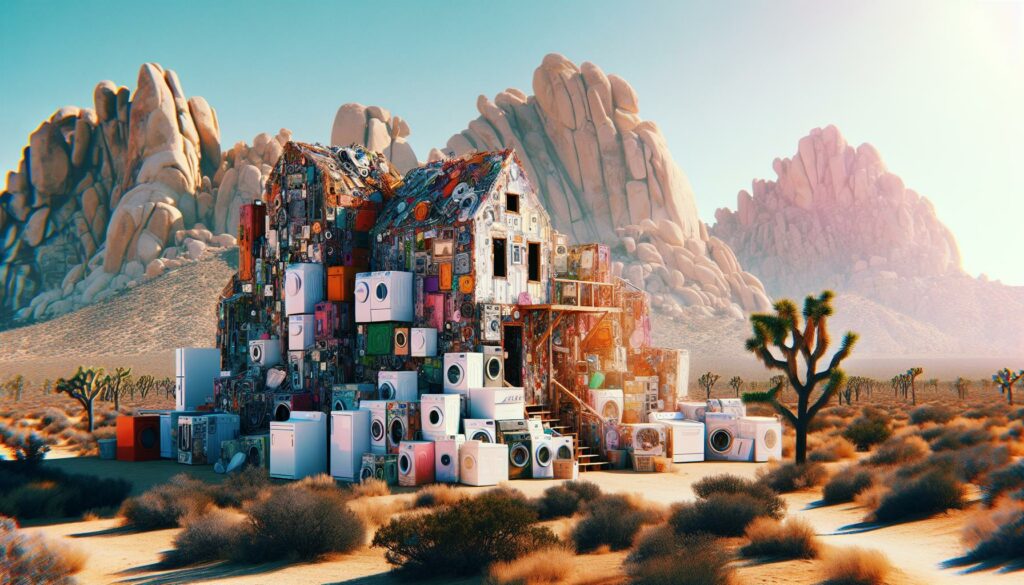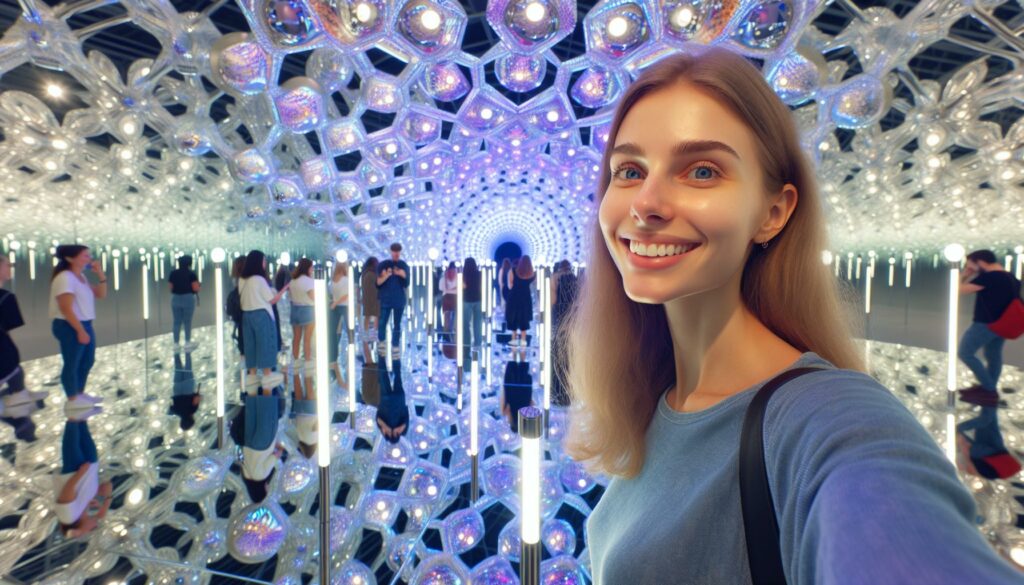Paper transforms into extraordinary dimensions when artists push beyond its flat limitations. In the captivating world of paper installation art, creators manipulate this humble material into breathtaking three-dimensional experiences that challenge viewers’ perceptions and fill entire spaces with wonder.
From delicate origami cascades to massive sculptural environments, paper installation artists demonstrate how a simple sheet can become an immersive adventure. These temporary masterpieces combine precision, imagination and scale to produce installations that seem to defy gravity while showcasing paper’s surprising versatility. Modern paper artists like Zim&Zou and Peter Gentenaar have elevated this medium into a respected form of contemporary art that continues to evolve and astound audiences worldwide.
Paper Installation Art
Paper installation art transforms ordinary paper materials into immersive three-dimensional experiences that engage viewers in unique spatial dialogues.
History and Origins
Paper installation art emerged in the 1960s as part of the broader installation art movement. Artists in Japan pioneered the integration of traditional paper-crafting techniques with contemporary spatial concepts, creating large-scale works that challenged conventional art boundaries. The 1970s marked a significant evolution with artists like Robert Rauschenberg incorporating handmade paper elements into environmental installations. This artistic approach gained momentum in the 1980s through influential exhibitions at the Museum of Modern Art in New York featuring paper-based installations by artists including Claes Oldenburg. By the 1990s, paper installation art established itself as a distinct medium, combining architectural principles with the delicate properties of paper.
Key Characteristics
Paper installation art features specific elements that distinguish it from other art forms. These installations incorporate diverse paper manipulation techniques including folding, cutting, stacking, weaving, suspending from ceilings, constructing dimensional forms. Artists use varied paper types: Japanese washi, corrugated cardboard, handmade cotton rag paper, recycled materials. Scale plays a crucial role in these works, ranging from intimate corner pieces to room-filling environments. The installations respond to architectural spaces through site-specific designs that consider lighting, air movement, viewer pathways. Temporal aspects define these works as many installations last only for specific exhibition periods, making documentation through photography essential for preservation.
Materials and Techniques
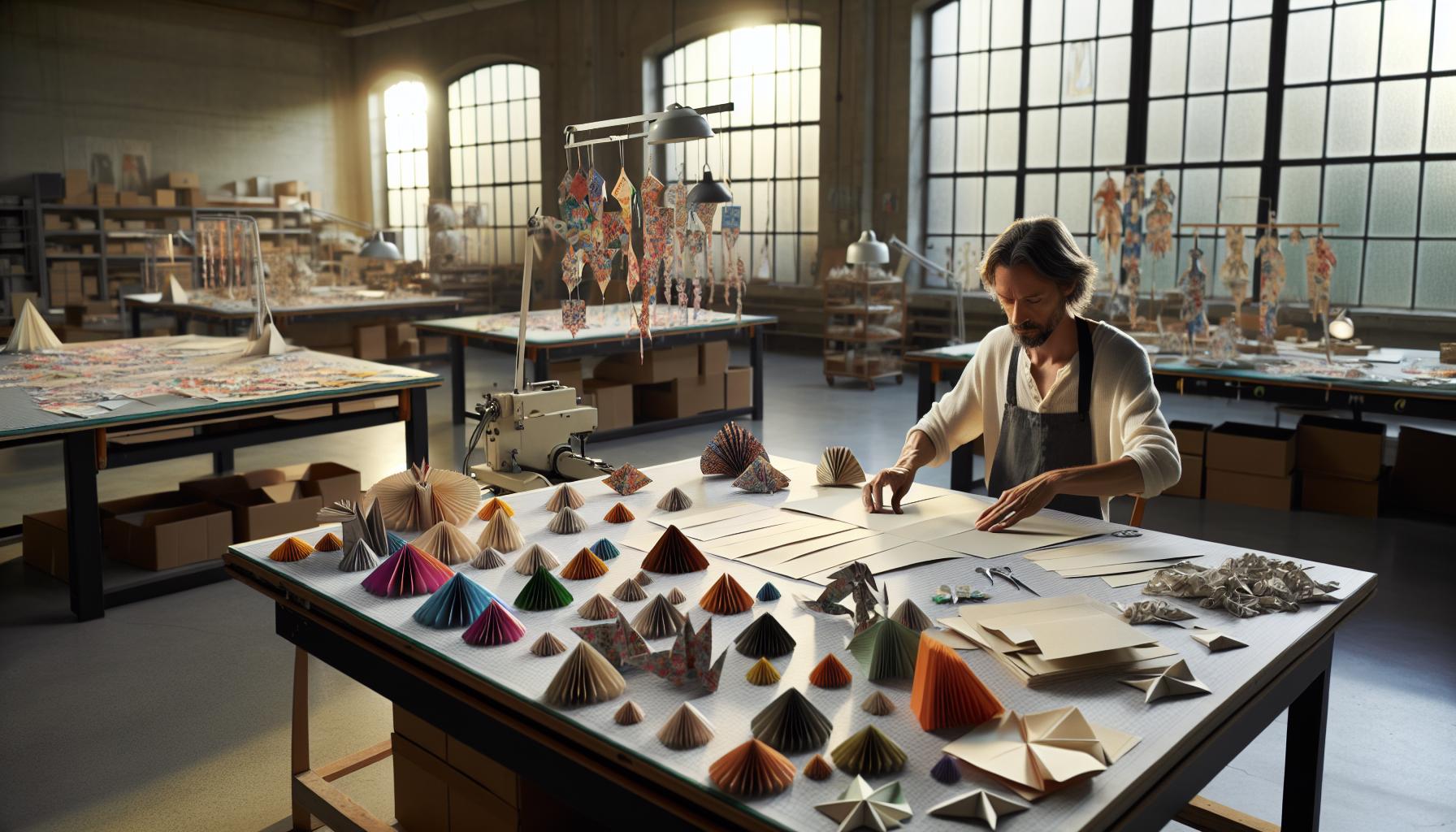
Paper installation artists select materials and employ specialized techniques to transform flat sheets into dynamic three-dimensional artworks. These choices directly influence the durability, visual impact and structural integrity of the final installation.
Types of Paper Used
Japanese washi paper features prominently in installations due to its strength and translucent properties. Artists incorporate diverse paper varieties including handmade cotton rag paper, mulberry bark paper and commercial options like kraft paper. Rice paper provides delicate texture effects while cardstock delivers structural support for larger pieces. Specialty papers include:
- Watercolor paper (140-300 gsm) for sculptural stability
- Tissue paper for creating layered translucent effects
- Handmade papers with embedded materials like flower petals
- Recycled papers that add organic texture variations
- archival-quality papers for permanent installations
Construction Methods
Artists employ multiple techniques to manipulate paper into three-dimensional forms:
- Wet-folding creates organic curved surfaces
- Scoring and folding establishes precise geometric shapes
- Paper cutting produces intricate negative space patterns
- Quilling forms delicate coiled elements
- Papier-mâché builds solid sculptural masses
- Pleating generates rhythmic textural effects
- Laminating multiple layers increases structural strength
The scale of the installation determines the construction approach. Large works often combine several techniques and require internal support frameworks. Small-scale pieces focus on precise hand-manipulation methods. Environmental factors like humidity and air circulation influence material selection and assembly strategies.
Notable Paper Installation Artists
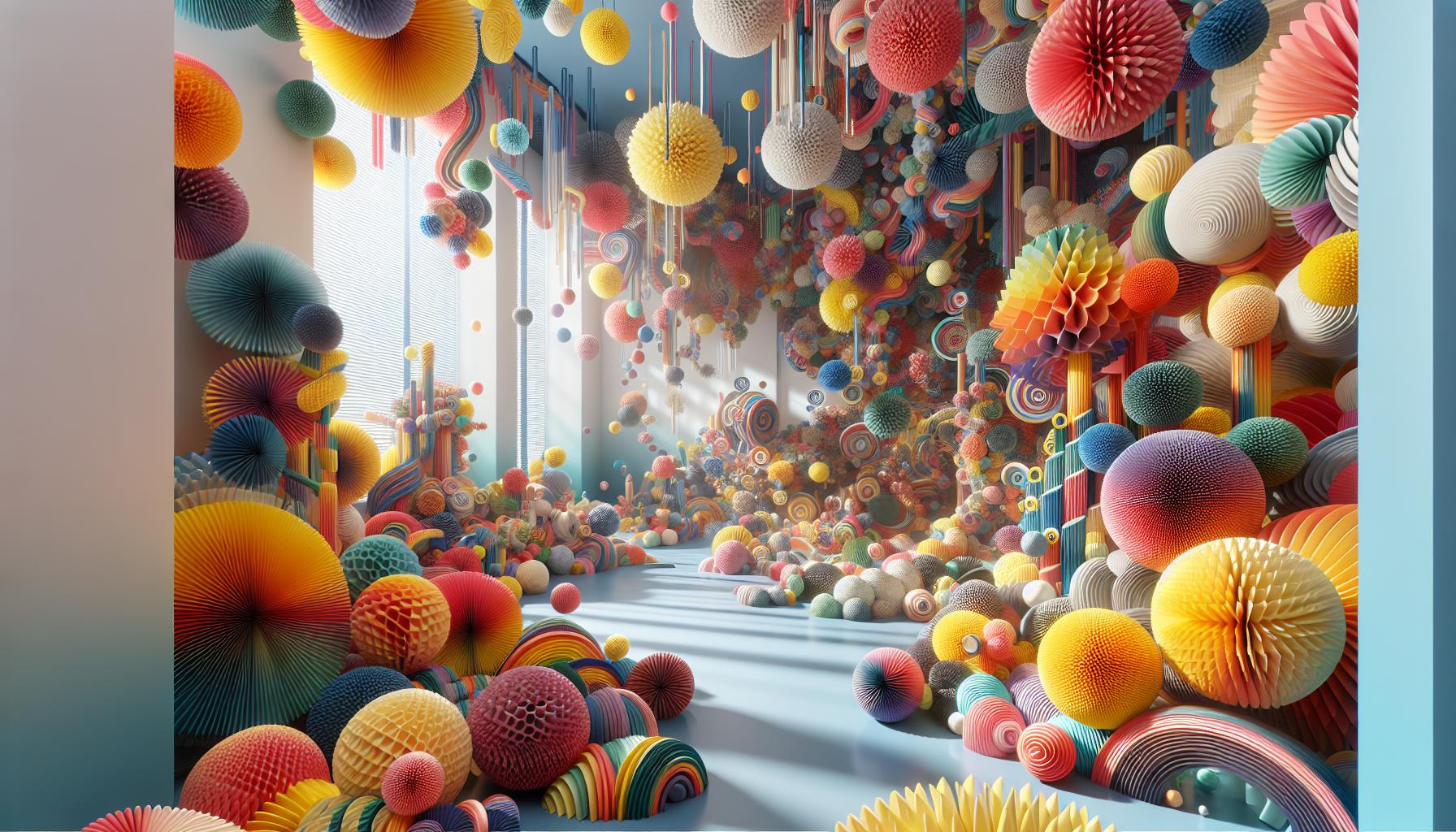
Paper installation artists transform ordinary paper into extraordinary spatial experiences that challenge viewers’ perceptions and emotions. Their masterful techniques create immersive environments that redefine the possibilities of this versatile medium.
Contemporary Masters
Tara Donovan creates large-scale installations using everyday materials, including her striking paper plate sculptures that form undulating landscapes. Angela Glajcar crafts dramatic void spaces in layered white paper, creating ethereal tunnels of light. Richard Sweeney manipulates paper through complex geometric folding to produce organic architectural forms. The collaborative duo Zim&Zou builds intricate paper worlds featuring mechanical elements colored in vibrant hues. Yulia Brodskaya pioneered modern quilling techniques, developing sophisticated paper portraits that blend traditional craft with contemporary artistry.
Pioneering Artists
Isamu Noguchi integrated paper lanterns into sculptural environments during the 1950s, establishing paper as a legitimate installation medium. Louise Nevelson incorporated paper elements into her monumental assemblages, expanding the material’s artistic possibilities. El Anatsui transformed paper waste into massive tapestries, challenging conventional definitions of installation art. Robert Rauschenberg’s paper combines from the 1970s merged printing techniques with dimensional construction. Irving Harper created over 300 paper sculptures between 1964 and 1983, developing innovative folding methods that influence contemporary artists today.
Impact on Modern Art
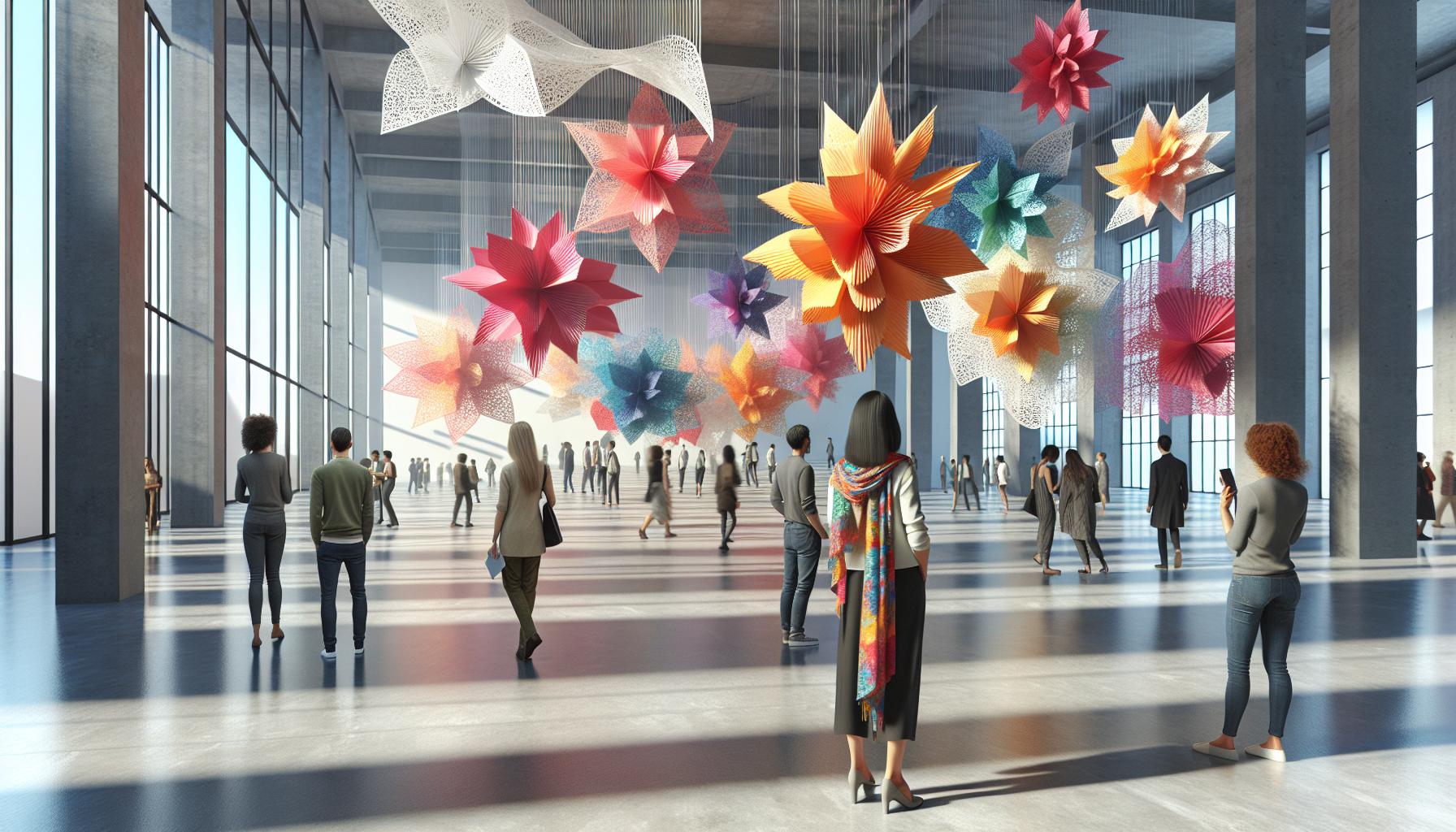
Paper installation art transforms traditional gallery spaces into immersive environments that challenge viewers’ perceptions of dimensional art. This medium creates a bridge between conventional art forms and contemporary spatial experiences.
Cultural Significance
Paper installation art connects diverse cultural traditions through its universal medium. Museums worldwide showcase paper installations that reflect local artistic heritage while embracing global contemporary aesthetics. The Metropolitan Museum of Art’s 2019 exhibition “Paper Transformations” attracted 250,000 visitors, demonstrating the medium’s broad appeal. Asian-influenced techniques merge with Western architectural concepts in works by artists like Koji Shiraya, creating cross-cultural dialogues. Paper installations serve as cultural ambassadors, appearing in public spaces from Tokyo’s Roppongi Hills to London’s Tate Modern, engaging viewers regardless of their artistic background.
Environmental Considerations
Paper installation artists incorporate sustainable practices into their creative process. Recycled materials compose 65% of contemporary paper installations, reducing environmental impact. Artists like Wade Kavanaugh utilize responsibly sourced papers certified by the Forest Stewardship Council. Temporary installations minimize long-term storage requirements, while documentation through digital means reduces physical waste. Paper’s biodegradable nature allows for environmentally conscious disposal after exhibition completion. Studios implement closed-loop systems, collecting installation remnants for future projects or recycling programs. LED lighting systems in paper installations consume 80% less energy than traditional gallery lighting, enhancing sustainability efforts.
Exhibition and Display
Paper installations transform gallery spaces into immersive environments through careful consideration of spatial dynamics lighting elements. The successful presentation of these delicate artworks requires meticulous planning and precise execution.
Space Requirements
Paper installations demand specific spatial configurations based on the artwork’s scale composition. Large-scale installations need open areas with minimum ceiling heights of 12 feet to achieve dramatic visual impact. Wall-mounted pieces require 3-5 feet of viewing distance for optimal appreciation while suspended works need clear sightlines from multiple angles. Climate-controlled environments maintain constant temperatures between 68-72°F with 45-55% relative humidity to preserve paper integrity. Exhibition spaces incorporate protective barriers or designated pathways to prevent direct contact while maintaining visibility. Custom-built platforms or pedestals elevate floor-based installations 4-6 inches above ground level for protection from foot traffic debris.
Lighting and Presentation
Strategic lighting enhances the dimensional qualities paper artworks. LED spots with color temperatures of 3000-4000K create balanced illumination without heat damage. Track lighting systems positioned at 45-degree angles minimize harsh shadows cast by three-dimensional elements. Diffused ambient lighting at 300-500 lux preserves delicate papers while ensuring visibility. Display cases incorporate UV-filtered glass panels to protect sensitive materials from light degradation. Motion sensors activate focused lighting when viewers approach specific installation zones. Digital projections complement paper surfaces through mapped imagery that responds to the artwork’s forms textures. Professional documentation requires specialized lighting setups to capture the installations’ subtle details atmospheric qualities.
Preservation Challenges
Paper installation art faces unique conservation challenges due to the delicate nature of paper materials. Environmental factors affect the longevity of these artworks while documentation ensures their preservation for future generations.
Environmental Controls
Temperature fluctuations compromise paper installations through expansion contraction cycles that weaken fibers. Climate control systems maintain optimal conditions of 68-72°F (20-22°C) with relative humidity between 45-55%. Museum-grade HVAC systems filter airborne particles like dust mold spores to prevent degradation. UV-filtered lighting limits exposure to 50-100 lux protecting pigments dyes from fading. Air circulation requires careful monitoring as excessive airflow damages delicate components. Sealed display cases with silica gel packets regulate microenvironments for sensitive pieces.
Documentation Methods
High-resolution photography captures installations from multiple angles preserving their three-dimensional qualities. 360-degree video recordings document spatial relationships viewer pathways throughout the space. Photogrammetry creates detailed 3D digital models enabling virtual preservation of ephemeral works. Written documentation includes material specifications installation instructions artist interviews condition reports. Time-lapse photography tracks deterioration patterns informing future conservation strategies. Digital archives store comprehensive documentation incorporating floor plans lighting diagrams structural details. Museums maintain databases linking preservation records across collections facilitating research access.
Paper installation art stands as a testament to human creativity and innovation in the contemporary art world. The medium’s versatility allows artists to transform simple sheets of paper into breathtaking spatial experiences that challenge our perception of this everyday material.
As this art form continues to evolve artists push boundaries while honoring traditional techniques. The growing focus on sustainable practices and preservation methods ensures these ephemeral masterpieces will inspire future generations through both physical presence and digital documentation. Paper installation art remains a powerful medium that bridges cultural traditions connects communities and redefines the possibilities of artistic expression.

